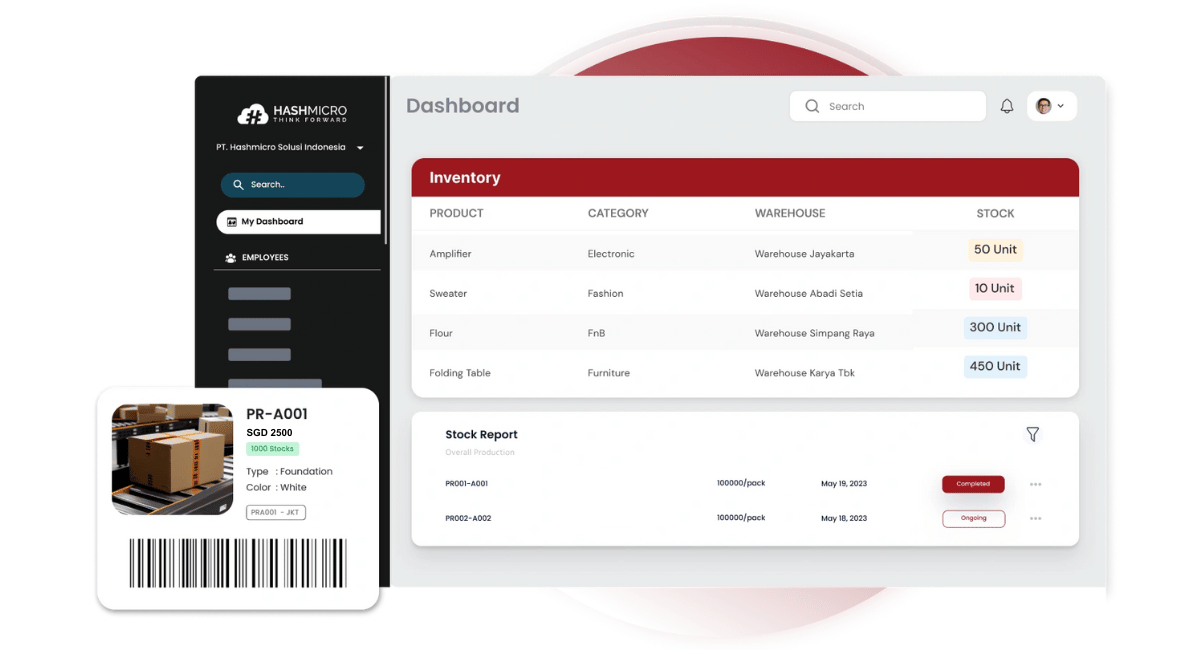Are you an e-commerce business operating in Singapore? If so, it’s crucial to have a robust order fulfillment strategy in place to meet customer expectations and ensure satisfaction. The order fulfillment process encompasses several key elements, including ecommerce fulfillment, order management systems, inventory management, fulfillment centers, warehousing and distribution, logistics services, shipping and delivery, fulfillment solutions, and online order processing.
By implementing best practices in order fulfillment, you can lower costs, improve customer service, and enable scalability for your business. This involves optimizing inventory management, streamlining processes, and automating where possible. But with numerous challenges in order fulfillment, such as inventory management and logistics planning, finding the right approach is essential.
In this article, we will delve into the intricacies of order fulfillment, provide tips for improving your fulfillment process, discuss different order fulfillment strategies, and explore the challenges businesses face. We will also guide you on choosing the right order fulfillment system.
Table of Content:
Table of Content
What is Order Fulfillment?
Order fulfillment is an essential process in the world of ecommerce. It encompasses the receiving, packing, and shipping of orders to customers. When a customer makes a purchase on an ecommerce store, the order fulfillment process begins. First, the ordered item is picked from the inventory. Next, it is carefully packaged to ensure its safety during transit. Finally, the package is shipped to the customer’s address.
The very first step in the order fulfillment process is receiving inventory from suppliers. This involves checking and storing the items in a warehouse. When a customer places an order, the fulfillment team springs into action. They carefully pick the items, pack them securely, attach a shipping label, and ship the package to the customer. In the event of a return, customers can use the included returns label to send the item back to the warehouse for processing.
Why is Order Fulfillment Important?
Order fulfillment plays a vital role in the success of any ecommerce brand. It offers several key benefits that can significantly impact your business. By partnering with an external fulfillment service provider, you can effectively lower your shipping and operational costs. This cost reduction can positively impact your bottom line, allowing you to allocate resources more strategically and invest in other areas of your business.
A well-executed order fulfillment process ensures accurate and timely delivery, enhancing your customer service and creating a positive customer experience. The ability to consistently meet customer expectations fosters trust and loyalty, leading to repeat purchases and increased customer satisfaction. Satisfied customers are more likely to recommend your brand to others, helping you generate valuable word-of-mouth marketing.
Efficient order fulfillment also enables your business to scale its operations. With a streamlined process in place, you can handle higher order volumes without compromising on quality or customer experience. This scalability is essential for accommodating business growth and capitalizing on new opportunities. By eliminating fulfillment bottlenecks and automating key processes, you can effectively manage increased demand and seize market advantages.
Furthermore, an efficient order fulfillment process saves you valuable time. By outsourcing this aspect of your business, you can focus on core activities such as marketing, product development, and customer engagement. With more time and resources at your disposal, you can drive innovation, expand your product offerings, and explore new markets, all of which contribute to long-term business growth.
In contrast, neglecting the order fulfillment process can have a negative impact on your business. Failing to fulfill orders accurately and on time can result in poor customer experience, damaged reputation, and lost revenue. Dissatisfied customers are unlikely to return and may share their negative experiences with others, tarnishing your brand’s image. Therefore, it is critical to prioritize order fulfillment and ensure its effectiveness in delivering exceptional customer service and fostering business growth.
How the Order Fulfillment Process Works
The order fulfillment process involves several crucial steps to ensure smooth and efficient delivery of customer orders. Let’s take a closer look at how each step contributes to the overall fulfillment process.
Step 1: Receiving inventory
Upon arrival at the fulfillment center, the incoming inventory undergoes a meticulous process. It is carefully counted, inspected, and inventoried to ensure that the correct quantity and quality of products have been received. This step is crucial in maintaining accurate and up-to-date inventory records.
Step 2: Order details
When a customer places an order on your ecommerce store, the order details are seamlessly transmitted to the fulfillment team. These details include the specific products ordered, quantities, shipping address, and any special instructions provided by the customer. The fulfillment team uses this information as a guide to process the order accurately.
Step 3: Picking
Based on the order details, the fulfillment team locates the ordered items within the inventory. They carefully pick the products to fulfill the order, ensuring that the correct items and quantities are retrieved for packaging. Attention to detail is crucial to maintain order accuracy.
Step 4: Packing
Once the products are picked, they are carefully packed to ensure their safety during transit. The packaging materials used may vary depending on the nature of the products, but the goal is always the same: to protect the items and present them in a professional manner. The packing process also includes affixing the shipping label, which ensures proper identification and routing.
Step 5: Shipping
After the packing process is complete, the parcel is ready for shipping. It is handed over to the designated shipping carrier for transportation to the customer’s address. The parcel is tracked throughout the shipping process, allowing both the customer and the business to monitor its progress in real-time.
Step 6: Returns processing
In the event that a customer wishes to return a product, the fulfillment process also covers returns processing. The customer initiates a return, and the returned product is carefully processed upon arrival at the warehouse. Depending on the specific situation, the returned item may be restocked for future orders or processed for a refund.
By following these steps, the order fulfillment process ensures that customer orders are accurately processed, packed, and shipped in a timely manner. This streamlined approach results in improved customer satisfaction and enables businesses to establish a strong reputation for reliable and efficient order fulfillment.
To illustrate the order fulfillment process visually, refer to the image below:
6 Tips to Improve Your Order Fulfillment Process
Optimizing your order fulfillment process is crucial for a seamless customer experience and efficient operations. By following these tips, you can enhance your order fulfillment process and drive customer satisfaction:
1. Optimize Inventory Management
Efficient inventory management is key to meeting customer demand and avoiding stockouts. Regularly review your inventory levels, and invest in inventory management software to track and analyze stock movement. This will help you make data-driven decisions about restocking and prevent overstocking or understocking.
2. Double Check Products
Before shipping orders, ensure that the correct products are picked, packed, and labeled. Implement quality control measures and perform thorough checks to minimize incorrect shipments and returns. Double-checking products reduces customer dissatisfaction and the costs associated with order errors.
3. Improve Relationships with Shippers
Building strong relationships with your shipping partners is crucial for timely and reliable deliveries. Establish clear communication channels, negotiate favorable shipping rates, and collaborate to resolve any delivery challenges. By nurturing these relationships, you can provide better shipping solutions to your customers.
4. Use Data to Drive Decisions
Data analysis is essential for making informed decisions in your order fulfillment process. Collect and analyze data on order volume, shipping times, and customer preferences to identify opportunities for improvement. Leverage this information to optimize processes, streamline workflows, and enhance overall efficiency.
5. Automate Where You Can
Automation can significantly increase efficiency and reduce the likelihood of errors in your order fulfillment process. Explore automation tools and technologies to automate repetitive tasks such as order processing, label printing, and inventory tracking. This allows your team to focus on higher-value activities and improve productivity.
6. Be Transparent with Customers
Transparency builds trust with your customers and enhances their overall experience. Keep customers informed about order updates, shipment tracking, and any potential delays. Provide accessible customer support channels to address inquiries and resolve issues promptly. Transparency fosters customer loyalty and satisfaction.
By implementing these tips, you can optimize your order fulfillment process, minimize errors, and provide exceptional service to your customers. Continuous improvement and alignment with industry best practices will help your business thrive in the competitive e-commerce landscape.
How to Determine Your Ecommerce Order Fulfillment Strategy
When it comes to deciding on the best order fulfillment strategy for your ecommerce business, there are several approaches you can consider. Each approach has its own advantages and considerations, so it’s important to choose the one that aligns with your specific needs and resources.
In-House Order Fulfillment: Keeping order fulfillment in-house means that your business manages all the steps of the fulfillment process internally. This approach gives you full control over the process and allows for greater customization to meet your customers’ expectations. However, it requires a dedicated team, infrastructure, and resources to handle inventory management, packing, and shipping efficiently.
Outsourcing to a Third-Party Fulfillment Service: Outsourcing your order fulfillment to a specialized third-party provider allows you to leverage their expertise and existing infrastructure. They take care of receiving inventory, picking, packing, and shipping orders on your behalf. This approach can be cost-effective and time-saving, as you can focus on other core aspects of your business. However, you must choose a reliable and reputable fulfillment partner to ensure efficient operations and maintain your brand reputation.
Drop Shipping: Drop shipping is a popular fulfillment method where the products are shipped directly from the supplier to the customer, bypassing the need for you to handle inventory. This approach eliminates the costs and complexities associated with warehousing and inventory management. However, it may result in less control over the shipping process and limited customization options.
Hybrid Model: Many businesses adopt a hybrid order fulfillment model that combines different approaches based on their specific requirements. For example, you can choose to handle certain products in-house while outsourcing others to a fulfillment service provider. This hybrid model allows you to optimize your resources and leverage the expertise of third-party providers where needed.
When determining your ecommerce order fulfillment strategy, consider factors such as your business’s skills, available resources, control over operations, and desired level of customization. Finding the right fulfillment approach can help streamline your operations, improve customer satisfaction, and drive business growth.
Order Fulfillment Options and Which is Right for You
When it comes to order fulfillment, businesses have several options, each with its own advantages and considerations. Choosing the right fulfillment model depends on your specific requirements and goals. Here are the main options to consider:
In-house Fulfillment
If you have the necessary expertise and resources, in-house fulfillment can provide greater control over your fulfillment activities. With this model, you manage all aspects of fulfillment internally, from inventory management to pick and pack operations. In-house fulfillment allows for customization and flexibility, but it requires substantial investments in infrastructure, technology, and skilled personnel. Consider this option if you have the capacity to handle all fulfillment processes efficiently.
Third-party Fulfillment
Outsourcing fulfillment to a third-party provider is a popular choice among businesses looking to reduce operational costs and focus on core activities. With third-party fulfillment, a specialized provider takes care of receiving, storing, picking, packing, and shipping your products. They have the expertise, infrastructure, and established processes to efficiently handle fulfillment operations. This option is especially beneficial for businesses with limited resources or those seeking to scale up operations quickly.
Drop Shipping
Drop shipping eliminates the need for inventory management and fulfillment altogether. In this model, you partner with suppliers or wholesalers who handle the storage and shipping of products directly to your customers. With drop shipping, you do not have to invest in inventory or manage fulfillment logistics. However, you may have less control over the shipping process and rely on your suppliers’ capabilities. This option is suitable for businesses that want to focus on marketing and customer acquisition rather than operational aspects.
Hybrid Model
A hybrid fulfillment model combines different approaches based on your specific needs and capabilities. It allows you to tailor your fulfillment strategy to different product lines, customer segments, or geographical locations. For example, you can choose to handle some products in-house while outsourcing others to a third-party provider or using drop shipping for certain items. The hybrid model offers flexibility and scalability, allowing you to optimize your fulfillment operations based on changing business requirements.
Ultimately, the right order fulfillment option for your business depends on various factors such as your resources, expertise, control requirements, and growth plans. Assess your needs and evaluate the pros and cons of each model to determine the best fit for your business.
Challenges of Order Fulfillment
Order fulfillment is a complex process that comes with various challenges that businesses in Singapore need to address. These challenges can impact the overall efficiency and effectiveness of the fulfillment process, requiring businesses to find effective solutions. Here are some key challenges commonly faced in order fulfillment:
Limited Warehouse Space
One common challenge is limited warehouse space, which can make it difficult to store and manage inventory efficiently. With limited space, businesses may struggle to accommodate their inventory and organize it effectively, potentially leading to inefficient picking and packing processes.
Handling High-Demand Periods
Another challenge is handling high-demand periods, such as during sale seasons or promotional events. These periods can put immense pressure on fulfillment processes, requiring businesses to ramp up their operations to meet the increased order volume. Careful planning and coordination are essential to ensure timely order processing and deliveries.
Inventory Management
Inventory management is a crucial aspect of order fulfillment. Businesses need to have a solid inventory management system in place to avoid stockouts and ensure products are available when they are needed. Effective inventory tracking and forecasting can help businesses optimize their inventory levels and avoid unnecessary costs.
Logistics Planning
Logistics planning plays a significant role in order fulfillment. It involves coordinating the movement of products from the warehouse to the customers’ addresses. Efficient logistics planning ensures on-time deliveries, minimizes shipping issues, and enhances customer satisfaction. Businesses need to consider factors like shipping carriers, shipping zones, and delivery routes to optimize their logistics operations.
Supply Chain Execution
Supply chain execution involves managing the flow of tasks and information throughout the supply chain. This can be challenging due to factors like sole suppliers, multiple stakeholders, and operational choices. Ensuring smooth coordination and communication across the supply chain is crucial for successful order fulfillment.
Overcoming these challenges requires businesses to adopt smart strategies, implement effective technologies, and partner with reliable logistics service providers. By addressing these challenges head-on, businesses can streamline their order fulfillment processes and provide exceptional customer experiences.
How to Choose the Right Order Fulfillment Service
When it comes to selecting an order fulfillment service for your business, it’s crucial to consider several key factors. Scalability, integration capabilities, customer support, and industry expertise should all play a role in your decision-making process.
Scalability: As your business grows, it’s essential to partner with an order fulfillment service that can scale alongside your success. Look for a provider that offers flexible solutions and has the capacity to handle increasing order volumes without sacrificing efficiency or quality.
Integration Capabilities: Seamless integration between your existing systems and the order fulfillment service is vital. Choose a provider that can effortlessly integrate with your ecommerce platform, inventory management software, and other critical tools. This integration will streamline your operations, minimize errors, and enhance overall efficiency.
Customer Support: Access to responsive and reliable customer support is vital when it comes to order fulfillment. Look for a service provider that offers excellent customer support, ensuring that any issues or concerns can be addressed promptly and efficiently. A dedicated support team will provide you with peace of mind, knowing that help is always just a phone call or email away.
Industry Expertise: Partnering with an order fulfillment service that has in-depth industry expertise can make a significant difference in your operations. Look for a provider that specializes in your niche or has a proven track record of successfully managing the unique challenges and requirements of businesses similar to yours. Their expertise will help them better understand your specific needs and provide tailored solutions.
By carefully considering factors such as scalability, integration capabilities, customer support, and industry expertise, you can choose the right order fulfillment service that aligns with your business goals and helps you create exceptional experiences for your customers.
Boost Your Business: Try the Best Order Fulfillment System in Singapore!
In e-commerce, order fulfillment efficiency is a key factor in ensuring smooth business operations. To help you optimize your order fulfillment process, HashMicro WMS (Warehouse Management System) offers fulfillment services equipped with integrated solutions.
HashMicro WMS is the best order fulfillment system in Singapore, with more than 1750 clients. Equipped by comprehensive features and advanced technology, HashMicro WMS will provide the best experience available.
With Hashmicro WMS, you can access an order fulfillment solution that covers product inventory management, packaging, shipping, and efficient order fulfillment. This system is designed to help you maintain stock availability, ensure proper packaging, and deliver orders to your customers on time.
Try the free demo now!



























































